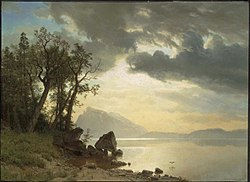James Lick's Legacy
- Cheryl Anne Stapp

- Aug 30, 2023
- 3 min read

When he died October 1, 1876, James Lick was the wealthiest man in California. From his deathbed in Lick House—the sumptuous San Francisco hotel he had partially built with his own hands—he disposed of his fortune in a number of generous bequests to the people of the state. The largest one was for the construction of Lick Observatory, to contain “A telescope superior to and more powerful than any telescope yet made.”
Eighty when he died, his had been a long and colorful life—although the years of his young manhood had been lived in consequence of a broken heart. Born in August 1796 in Stumpstown (now Fredericksburg) Pennsylvania, James grew up learning the craft of carpentry from his father. At age 21 he fell in love with Barbara Snavely, and wanted to marry her when she told him she was pregnant. However, her prosperous, mill-owner father refused him permission to marry her because, he scoffed, James was then a mere apprentice joiner “without a penny in his purse.”
Angry and heartsick, James moved to Baltimore, where he learned the art of piano making; then established his own shop in New York. In 1821, after learning that his pianos were being exported to South America, James sailed for Argentina, still hoping to acquire the wealth he needed that would allow him to marry Barbara. In 1832, carrying $40,000, he returned home, only to be thwarted again: his family, not realizing he ever really intended to claim his beloved, hadn’t told him that she had married another man and left town with James’s little son John some years before.
Altogether, James Lick spent nearly thirty years in South America, in three different countries, most of them as a prosperous piano manufacturer. An avid observer of the political scene, he concluded that the Mexican-American War, declared in 1846, would result in an American victory and the annexation of California. He arrived in San Francisco in January 1848, with his tools, 600 pounds of chocolate to sell (purchased from his Peruvian neighbor, confectioner Domingo Ghirardelli), and $30,000 in gold.
Timing, they say, is everything. Gold was discovered just 17 days after Lick’s arrival (an event that would shortly transform a mud shack village into a booming metropolis), followed in early February by the Treaty of Guadalupe Hidalgo, which ended the war and ceded California to the United States. The chocolate sold quickly, and Lick used his cash to invest in land, acquiring 37 San Francisco lots by mid-March. Lick, too, was infected with gold fever, but a week in the gold fields convinced him that his future prosperity lay in real estate, and he was able to purchase sizable properties elsewhere in California from residents eager to sell so that they could become gold miners.
At this time James Lick was in his mid-fifties, tall and stern-faced, a man of austere personal habits who had little interest in his own comfort or appearance. Leaving his city properties in the hands of agents, he transformed his orchards near San Jose into some of the finest in the state, and built a flour mill in Santa Clara. In 1855 he sent for his son John and started work on a lavish Santa Clara mansion to house them both, but never finished it. Late in 1861 he began work on a magnificent hotel in San Francisco called Lick House, cutting and placing much of the exquisite wood inlay in the dining room himself.
By the time he suffered a severe stroke at age 77, alone in his Santa Clara home, James Lick owned many properties in San Francisco, the Santa Clara Valley, and Lake Tahoe; all of Santa Catalina Island, plus a huge ranch in Los Angeles County. So that he could be more easily cared for, he moved into a room in Lick House and began the disposition of his fortune. After bequeathing funds for the observatory, his lesser bequests ranged from public baths to a home for aging widows; generous donations to an orphanage, and to an organization for the prevention of cruelty to animals.
James Lick is remembered for his strong will, his determination, his many noted eccentricities, and his accomplishments. Thoughtful yet often inflexible, honest and generous though often miserly, he is buried at Lick Observatory (completed on Mount Hamilton in 1888), beneath the refractor telescope he funded.




Comments